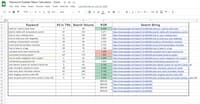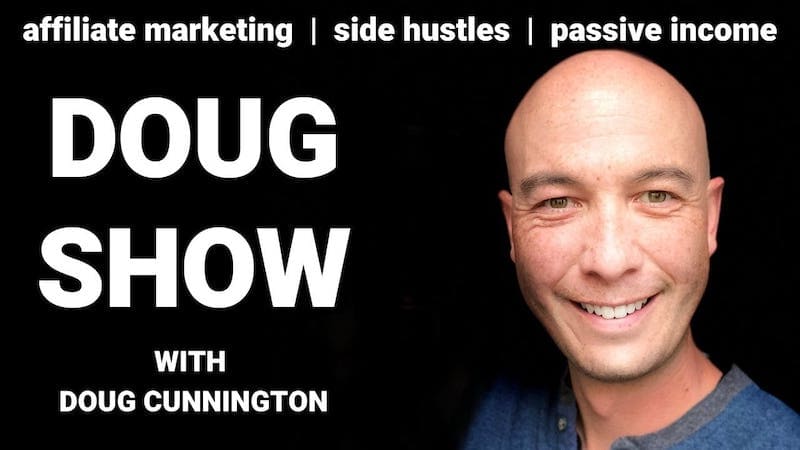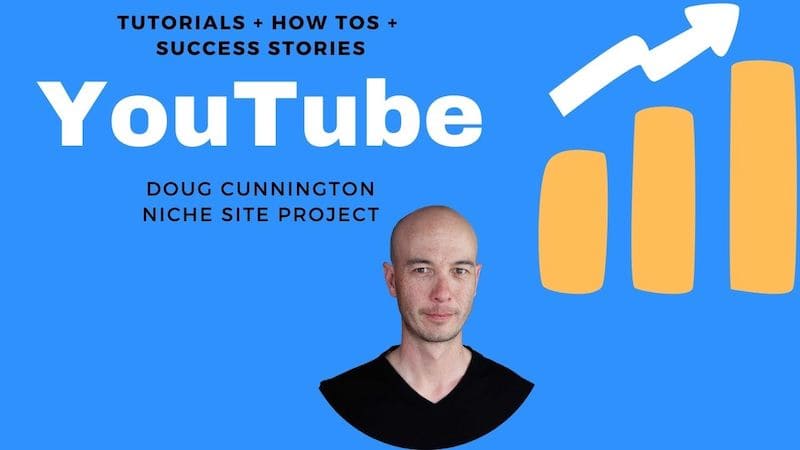If you are looking to increase the traffic to your Amazon affiliate websites and your search rankings, then investigate your Bounce Rate in Google Analytics.
That’s why I was looking at the bounce rate for my niche site. I have been refocused on my niche site after being laid off last month.
Things have been going well…and we’ve seen:
- Improved earnings in August.
- Improved traffic after some link building.
But the bounce rate was over 80% across the entire site, so I want to improve that. I made some changes and have seen a great improvement of about 7% overall.

I still have some work to do on the bounce rate, but I will explain how I got the 7%. It is also important to note that the specific page improved by 13%.
What is the Bounce Rate?
It’s a term out of Google Analytics so I went to the source:
Google. (Read it yourself right here.)

So, the user gets to your site and then does NOT go to any other page. The 3 main reasons are:
- The person found what they are looking for.
- The person didn’t like your site for some reason, like an annoying popup window or a design issue.
- The person didn’t have an interest in reading other pages on your site.
What is a Good Bounce Rate?
No one knows. There isn’t a hard and fast rule because it depends on the goal of the web page.
If a searcher is looking for bit of information, like the current weather, then a high bounce rate is expected.
A “good” bounce rate depends on the goal of the page…so you can’t just apply a percentage without considering the goal.
Sometimes a user is expected to bounce to some other web site.
In this particular case, I know that my previous Amazon Affiliate sites had a bounce rate of about 69% when they were ranking very well. With my current niche site project at 80+%, I knew there was work to do.
It is important to look at individual pages to understand what the goal of that page is.
Step-by-Step
There are many, many ways to reduce the bounce rate. Here is what I did and it’s super simple.
It literally took me 20 minutes.
That’s it. (Now, it may not work for everyone, so I offer a few alternatives later in this post.)
- Find the pages driving the most traffic.
- Look for a page (or more) that have a large amount of content.
- Break the content up into 2 or more pages or posts.
- Add links at the top and bottom to allow the user to navigate to the other pages.
- Get to the Google Search Console and make sure the new pages are indexed (should take about a minute).
The Inspiration
A person that I am coaching mentioned to me that one of his web sites uses this technique. I thought about it later and how it may be able to help out my site.
It’s no big secret…viral sites do this all the time…
“21 Pictures Of Dogs That Make You Want To Visit National Parks”
And, then you have to click through 21 pages, but it’s worth it because it’s funny and inspiring. (That’s a fake headline just so I can show this picture of Brodie at Old Faithful at Yellowstone National Park.)

Watch Out For These Things
The technique that I used may not work for every website.
Making such a change could have negative impacts…
Rankings
This specific technique may not work if you don’t want to interfere with rankings. So, if your page is ranking on page 1, that is #1 to #10, then you shouldn’t go messing up a good thing. The only time I would advise that is if you have tried everything already.
Be careful not to hurt your rankings by changing the content…
Consider any page your own site…All the content on the current page is contributing to the rankings. If you change that content, then you might hurt the rankings.
It worked for me because this particular page on my site is LONG. It was about 10,000 words.
I didn’t realize it was getting that long – it was a page that I kept adding to over time.
The Current Word Count
Let’s say your page is ranking on page 10 and you have nothing to lose. Well, you should make sure you aren’t going too far in reducing the word count on the pages.
Reserve this technique for longer content…Don’t go below 500 words as a rule of thumb.
I would not divide up pages to anything under 500 words a piece. Technically, you only need the user to view more than 1 page and that’s it.
It is generally accepted that longer content ranks better and gets more social shares. So, be mindful of those things when you reduce the length of pages.
Other Techniques To Reduce Bounce Rate
Here are several ideas to encourage visitors to go to other pages on your site.
- Add more links throughout the text on your site. (See the links that I added at the beginning of this article…) If you have links through all of your content, there is a good chance some users will read other posts.
- Add links to great content to your sidebar. It’s the same idea here, of course. Get people to click to other pages.
- Ensure that your site’s user interface is usable. If an annoying pop-up is the first thing that your user sees, then you may be losing a potential reader fast. Again, review your goals for the page since you may not care for certain pages.
- Target the right kind of traffic for the page. You need to review what keywords you are targeting for a specific page. When you get the right kind of traffic, the visitor will be more likely to read more on your site.
Conclusion
I was able to make a significant improvement on the overall site bounce rate by breaking up the content from 1 page into many pages.
- Overall the bounce rate fell by 7%.
- The individual page bounce rate fell by 13%
- The traffic to the site overall remained stable.
- The rankings for the page remained stable.
Be sure to understand the goal of a page before deciding if the bounce rate is bad. If you want to capture an email on a landing page, then a high bounce rate is expected.
If your page is long and the bounce rate is higher than you would like, then take a look at the time on the page. It might be that the visitor is very interested in the content and finds the answer they are looking for.
What do you think??
How important is the bounce rate? Do you have any ninja techniques to make the bounce rate drop??
Further Reading
- What You Can Learn from Bounce Rate & How to Improve It – Kiss Metrics
- 13 Ways to Reduce Bounce Rate & Increase Conversations – Neil Patel




Comments on this entry are closed.
Thanks for the great content on bounce rate, Doug.
OT: I liked the new design of your blog. It now looks more clean, more professional. I really loved it 🙂
Thanks, Al-Amin! I appreciate it.
Doug, This is a great post! I agree that working to lower bounce rate on your site should have a very positive overall impact on UX and (most likely) SEO. In regards to ecommerce, one thing that contributes to high bounce rate is out-of-stock items pages. Some of them still draw a lot of traffic, but they bring a high bounce rate. Your post inspired me to check GA and look for my highest entrance out-of-stock pages (like this one https://www.purepirate.com/gold-toy-pirate-hook)to add category links within the descriptions to encourage more clicks, lower bounce rate, and add some link juice to those category pages. This was more than worth 15 minutes of my time to do to 50 pages. I’ll have to come back in a couple months with an update!
Nice to see you’re making lemonade (this site) out of lemons (being laid off). Ya know that’s the nudge that Pat Flynn needed to get his niche sites going, right? Looking forward to more posts like this!
Hey Shane, thanks for the comment.
Nice tips, man! Bounce rate is always tricky. It’s great to see that your work yielded a pretty positive change.
Beautiful dog, too! Yellowstone is such a spectacular place. Things there that you just can’t see anywhere else.
Hey Jeff, Thanks! Let’s hope the bounce rate helps the rankings too.
can you please show me how to make money from niche site?
Hey Rock, Thanks for the question. You can check out the “Start Here” page. That should get you well on your way.
Hi Doug
It’s really a fact, Nowadays many bloggers are getting high bounce rates on their blog which is really a head ache for them.
Due to high bounce rate, they aren’t able to generate sales. I am also one of them.
Since last 4 months, I have been noticing that my blog is getting high bounce rate and my visitors are leaving my site so frequently.
They aren’t engaged with my content.
So to solve this issue, I was doing research on it and searching for some best ways which I can implement to reduce bounce of my blog.
While doing research, I have learn’t below points which can help to reduce bounce rate of the blog.
1. Fresh & Helpful Content
During the research, I was noticing few blog content and I found a big difference in them.
I have seen two blogs and one of them writing content just to sell their product and to drive traffic. The writer of that blog just writing articles based on keywords and their articles aren’t enough informative.
On that blog, I only seen content which aren’t helpful to me.
On the other side, the second blog is filled with awesome content.
Articles on the second blog is completely eye catchy and even after reading their titles, I wasn’t able to resist myself from reading those articles. I read almost 4-5 articles there and they all are hub of helpful information.
Difference which I noticed in between these two blogs is, 1st blog is only writing for sales and traffic But 2nd blog is writing just to help their readers.
2nd blog was focusing on creating high quality content which can solve issue, which can create results.
The writer of 2nd blog was giving brilliant solutions and writing in-depth articles.
He was focusing on readership and building relationship with their readers.
This was the big difference in these 2 blogs. & I learnt that content should be of such kind which can create results and solve issues. 😀
2. Updating Old Articles
2nd thing which I learnt is, Updating old articles.
I have learnt If we will not update old articles with fresh information then there would be high chances, the reader will surely leave our blog because they might not be getting what they really want.
So updating articles with fresh information would be a technique to hold them and engage them on our blog. Right? 😀
3. Content Readability
I myself never read those articles which have so long and thick paragraphs. I have seen some websites which writes so long and thick paragraphs which scare readers to read them.
I also scare when I see such long paragraphs and I don’t read them.
I always love to read short and clean paragraphs.
So we should must improve our content readability so that readers can find it interesting and helpful. 😀
There are also some other points like improving blog design etc etc But I can’t mention all of them in a single comment. 😀
Your article is really helpful to me and I learned so many points from you.
Thanks Doug for sharing such a great piece of content with us.
Happy Blogging 😉
Doug,
Very good test and as a reader I would love to read on a single page then browsing. That’s a reader perspective view since readers want to scan and skim the content asap.
Have you tested what makes people bounces on those pages? If not install a heat map and find out. The data can really help you figure out and maintaining the User experience.
Hoping to read a post on your blog about reducing the bounce rate using heatmaps sooner.
Thanks for the sharing the research.
Good day doug
Cheers
Suresh
Hi Doug,
Those who are new to SEO, they threw some mistakes bounce rate increases. As a result of eating pyalanti risk. Thanks for such an article to reduce bounce rate.
I find bounce rate needs to be really high or really low depending on the purpose of the site. Not all bounces are equal. My affiliate site has a bounce rate of 89.3%, which is awesome considering almost all of them bounce to Amazon through a link instead of hitting the back button. Analytics tells me that I push 87/100 visitors to Amazon on average and I convert at 5.7-7% on Amazon. My products are higher priced and the price per visitor averages out just over 1$ for every person I send.
Yes, Keith, 100% agree.
Hey Keith,
That’s interesting. I have the same bounce rate on my Amazon niche website. How can I verify in Analytics if I bounce my visitors to Amazon? From where can I see that?
Thanks!